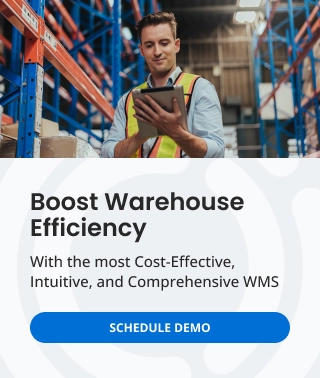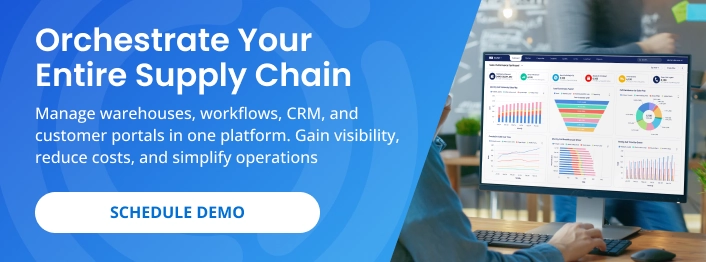In today’s fast-moving supply chains, businesses need more than traditional tools to stay competitive. A modern inventory management solution—especially cloud based—is becoming essential for companies looking to modernize their operations. Supply management software has long helped organizations control inventory, streamline purchasing, and coordinate logistics. However, as operations grow more complex, on-premise systems often fail to deliver the speed, flexibility, and real-time visibility that modern businesses demand.
This is where cloud systems step in. These solutions extend the capabilities of supply management software by providing real-time tracking, scalability, and anytime access—without the heavy costs of servers or IT maintenance. As a result, businesses of all sizes, from small retailers to global logistics providers, are finding that moving inventory management to the cloud is no longer optional but essential.
What Are Cloud Based Inventory Management Systems?
A cloud based inventory management system is a digital platform that helps businesses track, manage, and optimize inventory through the internet instead of local servers. Unlike traditional supply management software, which requires costly infrastructure and manual updates, cloud systems run on secure online servers. Therefore, companies can access their data anytime, anywhere, and from any device.
At their core, cloud systems perform the same functions as traditional inventory tools. They monitor stock levels, manage purchase orders, and support supply chain operations. Yet, they also provide important advantages. Real-time updates, automatic software upgrades, and seamless integration with e-commerce, ERP, or warehouse management platforms make these systems more flexible and scalable.
For businesses ready to modernize their supply management software, cloud based inventory systems are the natural next step. They combine the proven strengths of traditional inventory control with the agility and accessibility of the cloud. Consequently, these systems are becoming the preferred choice for companies competing in today’s fast-paced markets.
Key Features of Modern Inventory Systems
Cloud inventory management systems go beyond simple stock tracking. These platforms include features that improve accuracy, reduce manual work, and give businesses stronger control over their supply chains.
Real-Time Tracking and Visibility
Stock levels update instantly with each sale, return, or transfer. As a result, companies avoid stockouts, reduce excess inventory, and make faster, data-driven decisions. A WMS mobile app allows staff to update records directly from the warehouse floor—so any inventory level can be verified in seconds and kept accurate in real time.
Multi-Location and Channel Integration
Companies with multiple warehouses, stores, or sales channels can manage everything from one platform. This integration keeps records consistent across e-commerce sites, retail outlets, and distribution centers, while syncing sales orders and centralizing order management to prevent overselling and ensure smooth fulfillment. Moreover, when paired with customer portals, businesses can provide buyers with accurate visibility into stock availability and order status.
Automation and Analytics
Routine tasks such as reorder alerts, purchase orders, and invoice matching can be automated. In addition, built-in analytics help managers identify trends, improve forecasts, and act on insights, while barcode scanning validates items at receiving, putaway, and picking to reduce errors. Workflows streamline processes even further by reducing manual intervention and ensuring tasks are completed on time.
Scalability and Flexibility
As a company grows, cloud based systems grow with it. Adding users, expanding into new facilities, or connecting to additional platforms is quick and requires no heavy IT investment. This flexibility makes it easier to adapt as market conditions or business needs change.
Taken together, these features highlight why cloud solutions are stronger than traditional supply management software. They provide the tools businesses need to keep pace with today’s fast-changing markets.
Benefits of Cloud Inventory Management Systems
The benefits of cloud based inventory management software go beyond convenience: it lowers costs, improves accuracy, and helps teams respond faster to customer needs. A cloud based inventory management system, often referred to as a warehouse management system (WMS), provides the flexibility and real-time visibility that legacy tools cannot match.
Cost Efficiency and Reduced IT Burden
Cloud systems eliminate the need for expensive servers, on-site maintenance, and complex upgrades. Instead, businesses pay for what they use and benefit from automatic updates. As a result, they reduce upfront investment and free up internal IT resources. Furthermore, predictable monthly or annual costs make planning and scaling easier.
Example: A mid-sized distributor previously spent thousands on server maintenance and IT staff hours to manage updates. After switching to a cloud WMS, their IT costs dropped by nearly 40%, allowing them to reinvest in customer service and growth.
Statistic: According to Gartner, businesses can reduce IT costs by up to 30% when moving from on-premise to cloud-based systems.
Anywhere, Anytime Accessibility
With data stored securely online, managers and employees can access inventory records from any device. Moreover, this flexibility is valuable for businesses with multiple warehouses or distributed teams, and it saves time by reducing back-and-forth and duplicate data entry. In addition, cloud platforms ensure everyone works with the same real-time information, no matter where they are.
Example: A retailer with several stores uses a cloud WMS to track stock centrally. When an item is sold online, the system updates instantly across all locations, preventing overselling and improving customer satisfaction.
Statistic: A study by Statista found that 94% of enterprises already use cloud services, with accessibility listed as one of the top three benefits.
Improved Accuracy and Fewer Errors
Manual processes and outdated software often lead to costly mistakes. However, cloud platforms reduce human error by automating data entry, syncing records across channels, and maintaining inventory levels in real time with instant alerts when stock reaches critical points. Consequently, businesses see higher accuracy and lower operational costs.
Example: A 3PL company introduced automated reorder alerts through its cloud WMS. As a result, missed restocks dropped by 60%, and late order penalties from clients were eliminated.
Statistic: Research by Aberdeen Group shows that companies using real-time inventory visibility achieve a 97% order accuracy rate, compared to 87% for those without it.
Data-Driven Decision Making
Beyond day-to-day tracking, cloud inventory systems provide advanced analytics. They help managers forecast demand, identify slow-moving items, and plan more efficient replenishment strategies. Therefore, companies make smarter decisions and improve customer satisfaction.
Example: A manufacturer leveraged cloud analytics to identify materials that consistently ran short before production. By adjusting safety stock levels, they cut production delays by 25%.
Statistic: McKinsey reports that companies using advanced analytics in supply chain management can improve forecast accuracy by 20–30%, leading to significant cost savings.
Scalability and Competitive Edge
Cloud systems scale quickly as the business grows. Adding new users, opening additional facilities, or integrating new sales channels does not require major IT projects. This agility gives companies a competitive advantage in fast-moving industries.
Example: An e-commerce startup scaled from one to five warehouses in under a year. Because their cloud WMS scaled with them, the expansion required no additional servers or major infrastructure upgrades.
Statistic: MarketsandMarkets projects that the cloud supply chain management market will reach $22.7 billion by 2027, growing at a CAGR of 11.2%.
Challenges and Considerations
Cloud inventory systems bring many advantages. However, businesses should also understand the challenges before making the switch. Knowing these issues in advance makes it easier to plan and choose the right solution.
Internet Dependency and Downtime
Because cloud systems run online, a stable internet connection is essential. Without it, access to inventory data may be delayed. To reduce risk, companies often set up backup connections or select providers that offer offline syncing features.
Data Security Concerns
Storing sensitive supply chain data in the cloud raises questions about privacy and protection. Yet, most providers use encryption, regular security audits, and strict access controls to safeguard information. Businesses should still evaluate vendors carefully and confirm compliance with standards that match their industry.
Vendor Lock-In and Customization Limits
Some providers make it difficult to migrate data or switch platforms later. In addition, customization is often limited compared to fully in-house systems. To avoid these problems, businesses should choose vendors that support open integrations and flexible configurations. Custom fields allow companies to tailor the system to their specific data needs, while automated workflows streamline repetitive tasks. Together, these features reduce the need for deep customization and keep operations efficient.
By addressing these considerations early, companies can reduce risks and maximize the value of cloud inventory systems.
Who Benefits Most from Cloud Inventory Systems
Cloud inventory systems are not just for large enterprises. They provide value across different industries and business sizes. Here are the groups that benefit the most:
Small and Midsize Businesses
Smaller companies often lack the resources to maintain costly on-premise systems. With cloud solutions, they gain access to advanced inventory tools without heavy IT investment. As a result, they can scale faster while keeping costs predictable.
E-Commerce and Omnichannel Retailers
Retailers selling across online stores, physical outlets, and marketplaces need accurate, real-time stock data. Cloud platforms integrate sales channels to prevent overselling and ensure smooth order fulfillment. Customer portals also improve service by giving buyers visibility into order status and stock availability.
3PLs and Logistics Providers
Third-party logistics companies manage inventory for multiple clients. A cloud based WMS helps them track stock across different locations, streamline workflows, and share accurate data with clients. This transparency builds trust and strengthens long-term relationships.
Manufacturers with Multiple Facilities
Manufacturers often balance production schedules, raw materials, and finished goods across several warehouses. Cloud systems provide a single view of inventory across all sites. This visibility supports better planning, reduces waste, and improves efficiency.
How to Choose the Right Cloud Based Inventory Management System
Selecting the right solution is critical for long-term success. With many options on the market, businesses should evaluate systems carefully to ensure they meet both current and future needs.
Scalability and Growth Readiness
The system should adapt as the business grows. Adding users, managing new warehouses, or expanding into new markets should be simple. A scalable platform prevents costly upgrades later.
Ease of Integration
A strong inventory platform should connect easily with ERP, e-commerce, and other supply chain tools. Open integrations reduce manual work and improve data accuracy. When workflows are automated across systems, operations run more smoothly.
Vendor Reputation and Support
Choosing the right partner matters as much as the software itself. Companies should look for vendors with proven experience, reliable support, and positive customer feedback. In addition, clear onboarding and training resources ensure faster adoption.
Cost Versus Value
Price should never be the only factor. Instead, businesses should weigh costs against the features, scalability, and long-term value delivered. Predictable subscription pricing can often replace high upfront investments, making the cloud option more affordable overall.
Conclusion
Cloud inventory management systems are transforming the way businesses handle their supply chains. They deliver real-time visibility, reduce costs, and improve accuracy, all while being easier to scale than traditional tools. By combining the flexibility of the cloud with the proven value of supply management software, companies gain a solution built for today’s fast-paced markets.
For small retailers, large manufacturers, 3PLs, and e-commerce businesses, the shift to cloud technology is no longer optional. It is a competitive necessity. Organizations that adopt these systems position themselves for greater efficiency, stronger customer satisfaction, and long-term growth.
If you are ready to see how the right solution can improve your operations, consider Supply Chain Orchestrator. Our cloud WMS combines inventory management, workflows, and customer portal features in one platform designed to simplify and optimize supply chain operations.
Related Blogs

How to Select the Best Warehouse Management System
Choosing the best warehouse management system for your supply chain operations can feel like a daunting task, especially when there are so many type of software out there. A good WMS is more than just software; it’s a...
Start Reading

Mastering Your Warehouse with WMS Software: A Comprehensive Guide
We all know that a well-run warehouse is essential for any business that deals with physical goods and fulfillment operations. But keeping track of inventory, managing orders, and optimizing workflows can be a real he...
Start Reading

What is Warehouse Automation? A Guide for Warehouse Managers
As a warehouse manager, you face the daily challenge of increasing productivity, reducing costs, and improving efficiency. Warehouse automation offers an exciting opportunity in this pursuit, but as with any new and i...
Start Reading









